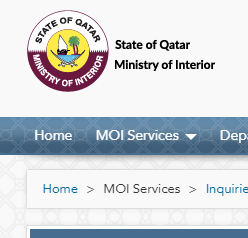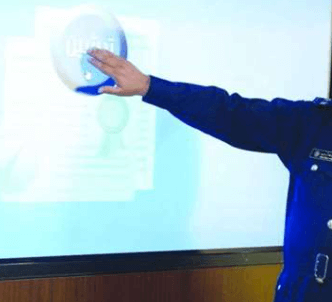Driving in Qatar is not an easy task; you have to be very careful and attentive while going in Qatar. The most important thing for a driver is to obey all visual signs and signals on the road. Traffic signal rules in Qatar are essential for a driver. It would help if you learned the meaning of each signal and must adhere to them. All the signs, including prohibition signs, mandatory signs, and warning signs, are specifically designed to save driving and public welfare.
Traffic Signal Rules In Qatar Motion Control Signs:
Three types of signs are used for traffic control in Qatar.
- Regulatory signs.
- Warning signs.
- Guide signs.
Everyone should learn and obey these signs. In any specific condition like heavy fog and rain, you can identify the signs by their shape. It is essential for drivers and pedestrians.

Regulatory Signs:
Following signs are regulatory signs;
Stop sign.
No entry sign.
Yield sign.
One way sign.
Handicapped sign.
Warning signs:
These signs are used for safety and precaution; the following signs are warning signs:
Dead end.
Road humps.
Unsealed road.
Railway crossing.
Guide signs:
These signs are for instructions and provide information. The following signs are called guide signs:
Informational signs.
Route signs.
Expressway.
Destination.
Roadways.
Prohibition signs:
These signs have the following features:
The circular shape, white background, red border. It consists of any form and wording with a diagonal cross.
Purpose:
These signs are safety signs are related to risk and health.
Example:
U-turn prohibited.

Overtaking is not allowed.

Right turn prohibited.

No smoking.

Bus prohibited.

Trailer prohibited.
Mandatory signs:
These signs are round in shape, and the background colour is blue. These signs are also called blue safety signs.
Purpose:
These signs tell traffic users what is mandatory. You should follow them when using a specific area of the road.
Example:
Give way.

One-way traffic.
No traffic in both directions.
No entry for cycles.
Pass on this side.
Wear a dust mask.
Safety helmet.
Warning Signs:
These signs have the following features:
The equilateral triangle, red border, white background, and warning sign in black.
Purpose:
These signs tell us about danger, obstacles, and hazardous on the road.
These signs require special attention, and you must follow them.
Example:
Road works ahead.
Uneven road.
Level crossing.
Merge.
Minimum speed.
Qatar Road Signs And Meanings:
Traffic signal rules in Qatar are self-evident all signals and signs have specific meaning and purpose, and a driver and pedestrian should know the meanings of all:
Three types of traffic lights are used in Qatar. Each color has its meaning.
Red light:
It indicates that all vehicles should stop behind the line. If you don’t stop at a red light, it is considered a traffic crime violation.
Greenlight:
It means that you may proceed and go. If you don’t move at a green light, it causes a problem in traffic flow. You cannot stop at this light.
Yellow light:
It tells us you must reduce your speed. If you don’t stop at the yellow sign, it is also considered a traffic violation.
Other colour signs are also used ;
- White background signs; are regulatory signs.
- The yellow colour conveys general warning signs, not specific.
- The green colour shows traffic movement is allowed.
- And guidance about directions.
- Fluorescent yellow and green tell us about school zone and pedestrian crossings.
- Orange colour indicates about work zone and roadway.
Qatar Traffic Signal Test:
If you want to get a driving license, you should pass a driving test; you should prepare yourself before the test if you’re going to pass it on the first attempt. It would help if you learned traffic signal rules in Qatar and other mandatory signs. There are the following tips for the test:
- Wear a comfortable and proper dress.
- Take instructions and don’t ask many questions.
- Adjust your mirrors and seat belt.
- Drive with moderate speed.
- Check your handbrake.
- Don’t miss the blind spot.
- Be careful at T-junction.
- Don’t apply a hard brake without any reason.
- Park your car always parallel to the road.
- Could you not say it is your first attempt?
Driving theory test in Qatar:
An online test is taken by the transport authority Qatar. It contains 30 questions after the test examiner tells you your result.
The questions are related to traffic signals and signs.
Qatar traffic control manual:
QTCM contain all guidelines and principles. It dictates all traffic control devices.
It includes all traffic signs, road markers, and traffic signals.
All these are used for warning, regulation, and guidance for the public.
It has 3 volumes.
Qatar traffic signal fines:
QR 500 if the pedestrian does not follow traffic signals and manual signs.
QR 6000 for red signal crossing.
If you destroy any traffic sign and shift it, you have to be paid a heavy amount minimum of QR 10,000 and a maximum of QR 50,000. And one-month imprisonment.
Qatar traffic signal app:
You can install apps related to driving in Qatar. They contain all Qatar traffic signal rules and information.
Driver guide app.
Metrash2 app.
Qatar traffic violations app.
FAQ:
How much is the fine for signal jumping in Qatar?
If you jump a signal in Qatar, you have to be paid QR 6000 and assigned 7 points on your license.
Signal jumping is a severe offense in Qatar because it leads to accidents and causes disturbance traffic inflow.
What are the mandatory traffic signals?
These are round in shape and have a red border. Some mandatory signs are blue. These signs are orders; you must obey them. If you do not follow them, the traffic police will charge you.
What are the five traffic signals?
Speed limit.
One way.
No entry.
Give way.
The right turn is not allowed.




